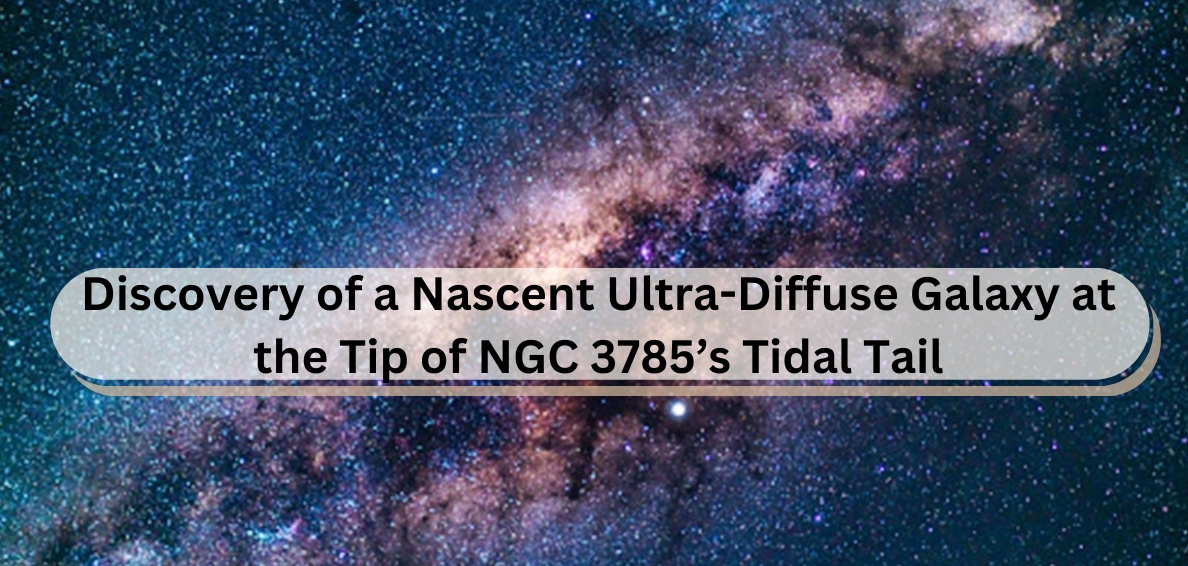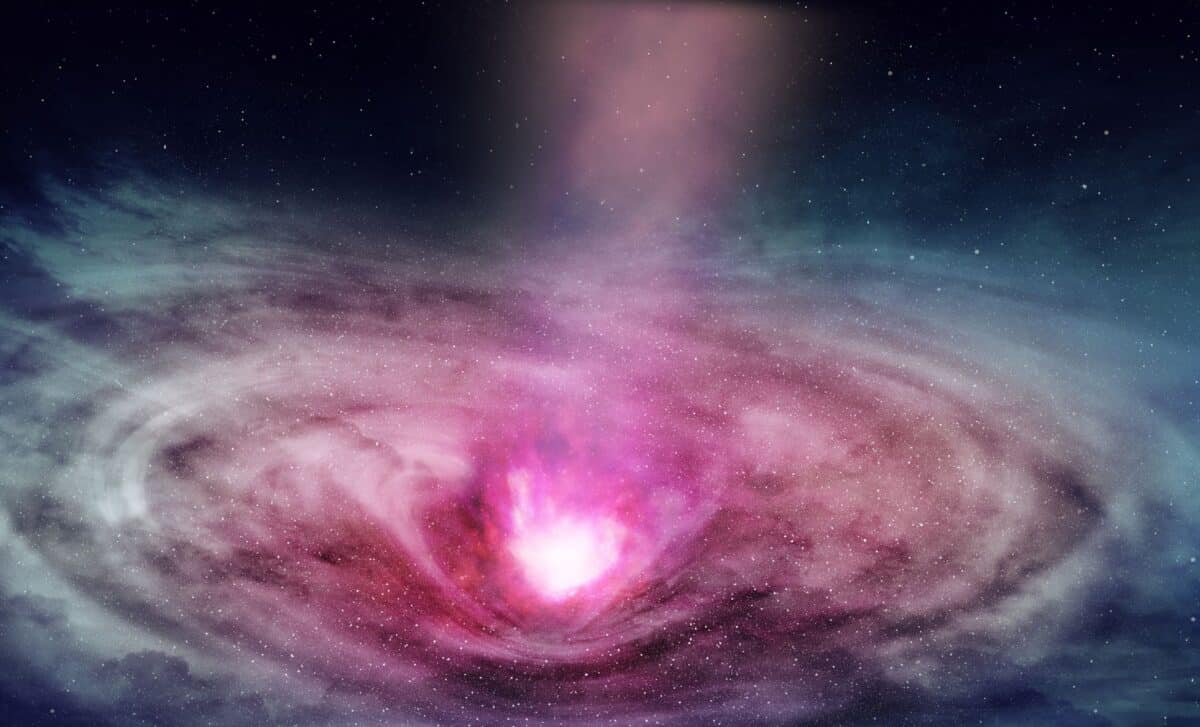- Courses
- GS Full Course 1 Year
- GS Full Course 2 Year
- GS Full Course 3 Year
- GS Full Course Till Selection
- Online Program
- GS Recorded Course
- NCERT (Recorded 500+ Hours)
- Polity Recorded Course
- Geography Recorded Course
- Economy Recorded Course
- AMAC Recorded Course
- Modern India, Post Independence & World History
- Environment Recoded Course
- Governance Recoded Course
- Science & Tech. Recoded Course
- International Relations and Internal Security Recorded Course
- Disaster Management Module Course
- Ethics Recoded Course
- Essay Recoded Course
- Current Affairs Recoded Course
- CSAT
- 5 LAYERED ARJUNA Mentorship
- Public Administration Optional
- ABOUT US
- OUR TOPPERS
- TEST SERIES
- FREE STUDY MATERIAL
- VIDEOS
- CONTACT US
Discovery of a Nascent Ultra-Diffuse Galaxy at the Tip of NGC 3785’s Tidal Tail
Discovery of a Nascent Ultra-Diffuse Galaxy at the Tip of NGC 3785’s Tidal Tail
08-01-2025

- In January 2025, astronomers discovered a nascent ultra-diffuse galaxy (UDG) in the Leo constellation, 430 million light-years from Earth.
- This galaxy is forming at the tip of the longest-known tidal tail, extending from NGC 3785 galaxy.
- The discovery provides new insights into galaxy evolution and the formation of faint cosmic structures.
What is NGC 3785?
- NGC 3785 is a galaxy located in the Leo constellation, known for hosting the longest tidal tail ever discovered.
- It has become a focal point for astronomers because of its extraordinary size and the unique phenomena occurring within its structure.
What is a Tidal Tail?
- A tidal tail is a long, thin stream of stars and interstellar gas that extends from a galaxy as a result of gravitational forces, known as tidal forces.
- These forces occur during close interactions or mergers between galaxies, where the gravitational pull distorts their shapes and pulls material away from them.
- Tidal tails are formed when two galaxies pass close to each other, transferring material into elongated streams.
- These features provide crucial insights into the history of galactic interactions and their effects on galaxy evolution.
- The tidal tail of NGC 3785 stretches an astonishing 1.27 million light-years, making it the longest tidal tail ever recorded.
How Was It Discovered?
- Initial study: The tidal tail was first identified by Omkar Bait, a student at the National Centre for Radio Astrophysics (NCRA) in Pune. He observed the tail’s unusual length and unique features during his study of NGC 3785.
- Detailed Analysis: Using advanced image processing techniques, a thorough photometric analysis has been conducted to measure the tail’s extent and properties accurately.
- The study revealed its record-breaking length of 1.27 million light-years and star-forming clumps along the tail, indicating active processes of material accumulation and galaxy formation.
What are Ultra-Diffuse Galaxies (UDGs)?
- Ultra-diffuse galaxies (UDGs) are faint galaxies with extremely low surface brightness. Unlike traditional galaxies, UDGs contain fewer stars spread out over a larger area, making them appear faint and diffuse.
- UDGs are challenging to detect due to their low brightness.
- Despite their faintness, they are of great interest because they provide clues about the formation and evolution of galaxies under unique conditions.
Formation of the UDG at NGC 3785’s Tidal Tail
- At the tip of NGC 3785’s tidal tail, astronomers observed the formation of a nascent UDG. This galaxy appears to have formed due to gravitational interactions between NGC 3785 and a neighbouring galaxy.
- The material pulled along the tidal tail accumulated at its tip, triggering star formation and leading to the emergence of the UDG.
- The presence of star-forming clumps along the tidal tail offers critical evidence of these processes.
Why is This Discovery Significant?
- Insights into Galaxy Evolution: This discovery provides a unique opportunity to study how faint and diffuse galaxies like UDGs are formed.
- It highlights the role of gravitational interactions between galaxies in shaping their structures.
- It demonstrates how material pulled into tidal tails can lead to the creation of entirely new galaxies over time.
- Importance of Studying Tidal Tails: Tidal tails act as natural laboratories for understanding the dynamics of galaxy interactions.
- They allow astronomers to observe how galaxies exchange material during close encounters.
- The presence of star-forming regions along these tails provides valuable data on how new galaxies are formed in these extreme conditions.
Upcoming Missions and Their Potential
Recent and upcoming advancements in observational technology are expected to revolutionize the study of faint galactic features:
- Euclid Space Telescope: Recently launched, this mission is designed to detect faint features with high sensitivity and resolution.
- Rubin Observatory’s Legacy Survey of Space and Time (LSST): This ground-based survey will systematically observe large areas of the sky, uncovering more tidal features and faint galaxies like UDGs.
- These tools will enable astronomers to study low surface brightness features, refine theories about galaxy evolution, and uncover more instances of UDG formation.
Conclusion
The discovery of a nascent ultra-diffuse galaxy marks a significant breakthrough in our understanding of galaxy interactions and evolution. The record-breaking tidal tail of NGC 3785 serves as a rare and valuable case for studying the formation of faint, diffuse galactic structures. With the advent of advanced observational tools, future research is poised to uncover more such features, offering deeper insights into the processes that govern the universe.
|
Also Read |
|




